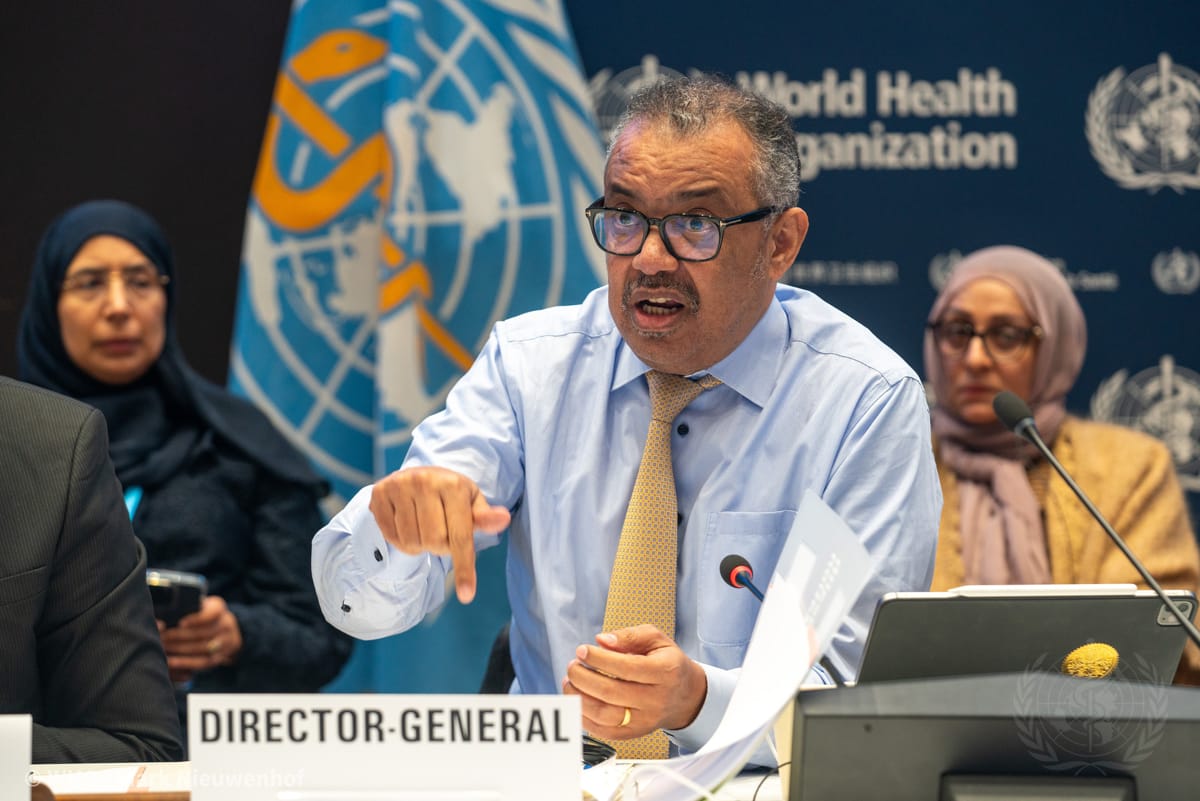Delegates in Geneva are approaching the final stretch of negotiating a pandemic treaty which is up for adoption at this year’s World Health Assembly, beginning 27 May. If adopted, the treaty could make the world safer from future pandemics such as Covid-19, which killed an estimated 28.5 million people and will cost the global economy about US$13.8 (AU$21.3) trillion through 2024.
But damaging disinformation has surrounded the negotiations, including the pervasive falsehood that through the treaty, the World Health Organisation is usurping the sovereign rights of states to implement their own health policies. Despite being widely debunked by fact checkers and media outlets, the disinformation persists, not only in Australia but worldwide. This claim is categorically false. Here’s why.
The draft treaty in clear and explicit terms reaffirms that countries retain the sovereign right to adopt and implement their own health policies. The treaty, like most do, sets out activities that states “shall”, “should” and are otherwise encouraged to do, but at all times countries retain the power to legislate as they see fit in furtherance of the treaty’s aims. It is not intended to, and does not, dictate national policy. There is a deep tradition in international law that states maintain sovereignty to make their own policy decisions, including health policy.
The text is explicit that nothing in it should be interpreted as giving WHO or its Director-General any of these powers; to claim otherwise is in bad faith.
Let’s look at the obligations and powers the treaty does give WHO. The role of the WHO is that of facilitator and coordinator. Countries have asked WHO to accelerate access to countermeasures such as vaccines, especially during health emergencies, by facilitating technology transfer and coordinating a global supply chain network. WHO would coordinate a new system of pathogen access and benefit sharing (PABS), acting as an intermediary between countries providing pathogen samples and sequence information (needed for making vaccines) and the manufacturers receiving them, including by concluding contracts with manufacturers that require them to share a percentage of their products with WHO to distribute as needed. WHO would also provide financial and technical support to countries for building up their public health capacities.
Now, let’s look at what the treaty doesn’t do. Nowhere in the treaty is WHO granted the power to direct or implement quarantines, lockdowns, or business closures, issue mask or vaccine mandates, or otherwise require that countries implement its recommendations. Where the treaty requires countries to strengthen pandemic surveillance capacities and share data with WHO, this means surveillance of pathogens, not surveillance of people’s movements: tracking a pathogen (disease surveillance) is quite different from tracking people. The text is explicit that nothing in it should be interpreted as giving WHO or its Director-General any of these powers; to claim otherwise is in bad faith.

To be clear, WHO legally cannot possess any of these powers. Its powers are vested in the WHO Constitution, itself a legally binding treaty, which confines WHO’s authority to international health work. It does not have jurisdiction over health work within nations. Domestic policy is just that – a national prerogative of sovereign governments.
It is a basic principle of international law that states are not bound by treaties unless they agree to be. The treaty is being negotiated by governments and governments alone through an intergovernmental negotiating body (including Australia as a major partner). Even so, the treaty won’t come into effect until 60 countries have formally agreed to become party to it, an act which represents their willingness to undertake the legal rights and obligations it contains. States remain sovereign actors even when they sign on to the treaty and only states that do are bound by it. WHO has no say in whether states join the treaty. And unless states negotiating a treaty create them (they rarely do, and they haven’t here), there are no overarching enforcement mechanisms for non-compliance. WHO couldn’t unilaterally enforce the treaty either.
While admittedly those who believe that a pandemic treaty will usurp state sovereignty are in a small minority, this fiction has increasingly found a home in mainstream media, and rages online. This disinformation has interrupted negotiations on reforms that the world’s governments uniformly agreed were necessary, and is damaging to the trust between people and public health institutions that is critical in pandemic and peace times alike – trust which was destabilised during the pandemic, and still is.
The treaty is still in its draft form, and there is no guarantee that enough countries will adopt it. But for governments that sign on, including Australia, there are major benefits. These include rapid access to scientific information and pandemic response products, and financial and technical support for strengthening their public health systems. If given full political support, a pandemic treaty would fundamentally improve global health security and equity when (and it is when, not if) the next pandemic threat emerges. It would be a grave error to allow patently false claims to dissuade governments from adopting it.

